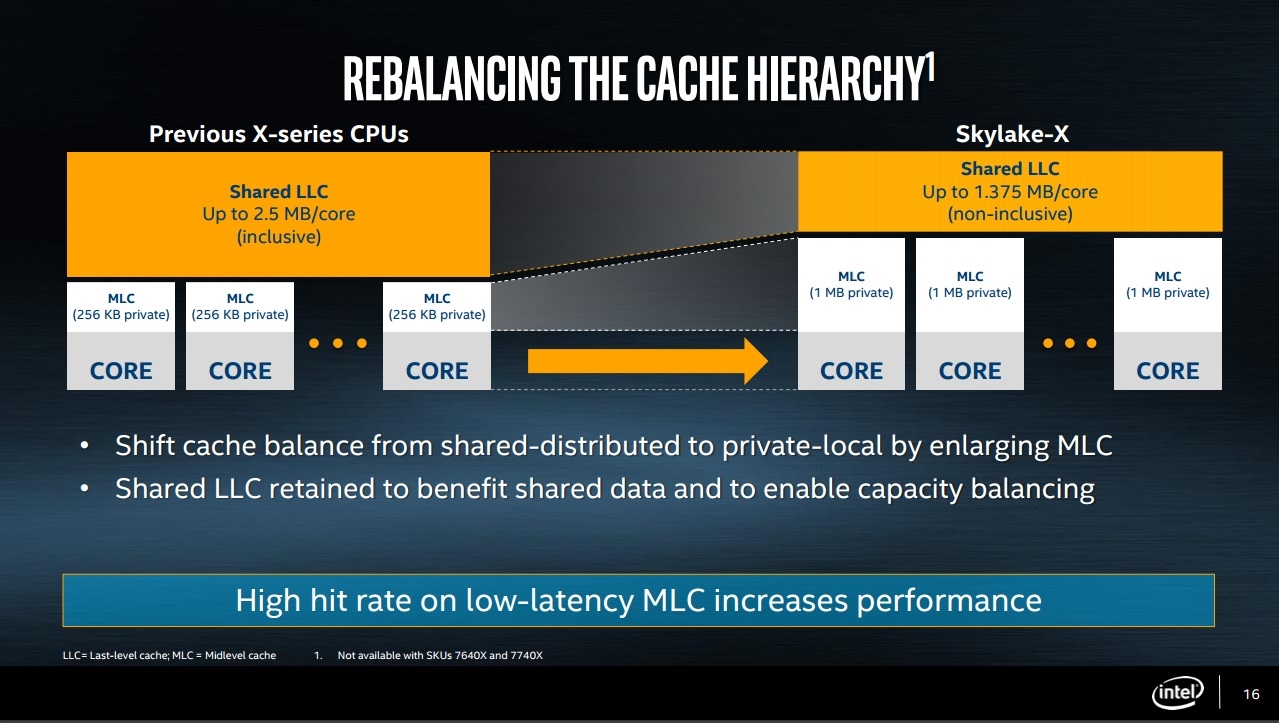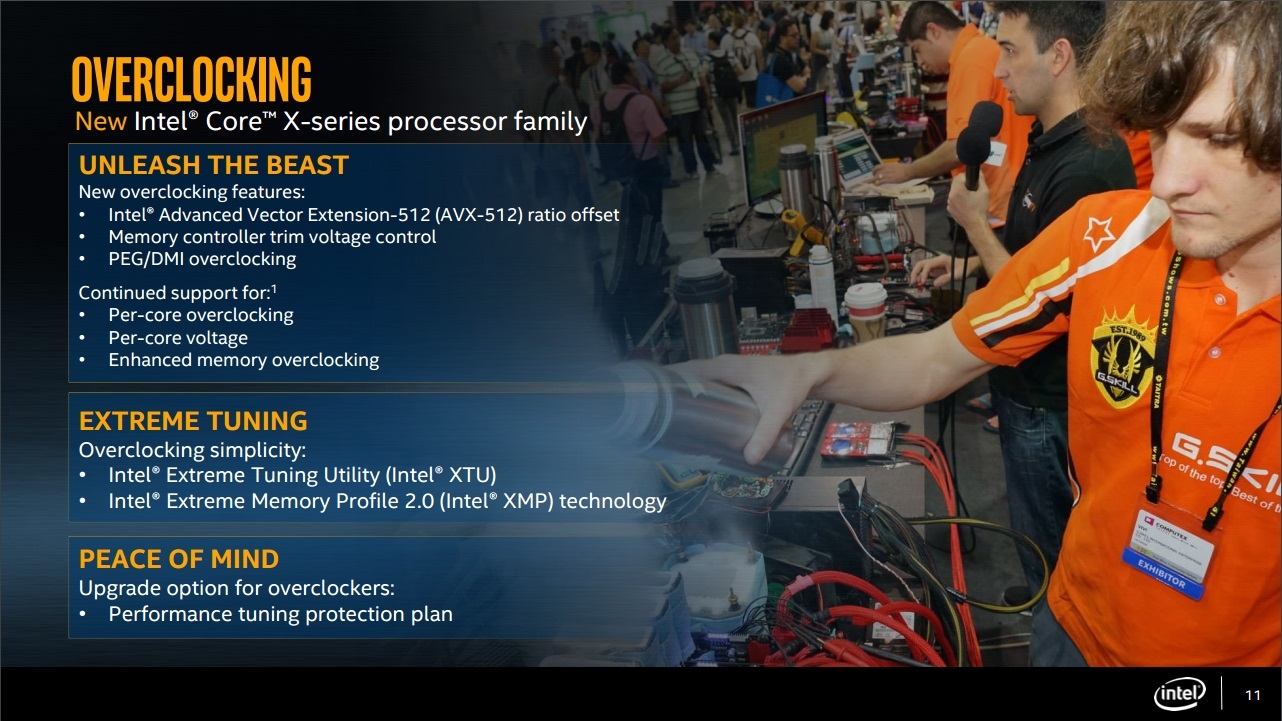Intel introducere X299, Kabylake-X & Skylake-X
CPU, Intel d. 30. maj. 2017, skrevet af M.Beier 0 Kommentarer. Vist: 11700 gange.
Intel's Breakthroughs and New Technologies
The insane 18 core 36 thread processor will be the first for Intel on the HEDT platform. It will also be the first time a 1 Teraflop processor hits the consumer market. Intel is also adding in support for AVX-512, improving Turbo Boost Max Technology 3.0, and boosting DDR4 speeds a bit. The Core i9 series are sure to make things interesting when compared to AMD's Thread Ripper.
Intel's HEDT CPUs are generally very similar to their mainstream CPUs, they just feature more cores and cache. However, this time Intel seems to have made a change to the smart cache hierarchy of the Skylake-X CPUs.
These changes include reducing L3 cache (by 50%) and quadrupling L2 cache to 1MB per core. By increasing the higher level cache (L1 is higher than L2, which is higher than L3) density, Intel is able to keep more data closer to the cores. To be clear, the fastest storage is L1 cache, then L2, L3, DRAM, Optane, NAND, and finally spinning platters (HDDs). Intel's algorithms might be producing lower miss rates than what they might have expected when designing Skylake's cache and it could possibly be the reason for the shift in cache size allocation. L2 cache is said to be more expensive than L3 cache as it's much faster.
There is also one other change, the L3 cache or LLC (lowest level cache) went from being inclusive (meaning it contained all the data in the cache level below it; L2) to non-inclusive, which means it may or may not contain all the data in the cache below it. Intel does seem to be tweaking the "smartness" of their "Smart Cache", and we will test the changes in the future. To be straight, the Kabylake –X processors do not get this cache tweak, and this tweak is not only a departure from Broadwell-X, but also a change from Skylake-S. Intel did go back and tweak the cache architecture; it's not just a change resulting from the shift from Broadwell to Skylake.
All processors on the X299 platform are unlocked, and Intel has added in some overclocking enhancements. They have added memory controller trim voltage control, which I assume means we will be able to change the voltage of the memory controller alone rather than a larger region inside the system agent. Intel has also added the ability to overclock the DMI/PCI-E bus, which was uncoupled from the CPU's BCLK a few generations ago to make BCLK overclocking easier. Intel is continuing to provide its Performance Tuning Protection Plan (PTPP) so you can insure your 18 core monster CPU from the perils of overclocking.
Intel's Turbo boost Max 3.0 has also been improved. While in the past Turbo Boost 3.0 would only boost one core very high, now it can boost your two best cores further up.
Anmeld
Information






